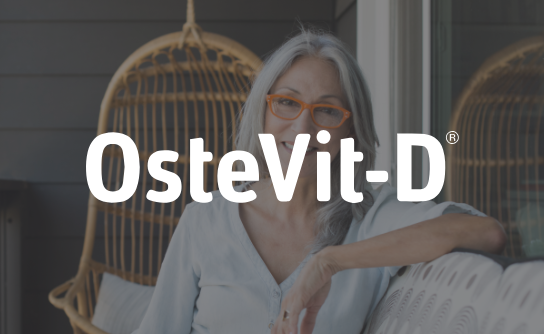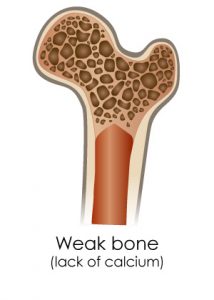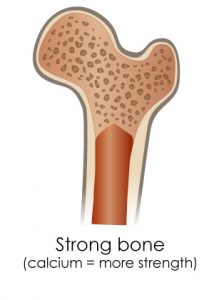
Vitamin D – a key to healthy bones
- Is essential for:1
– Bone health
– Muscle function
– Immune function - Main role is to enhance the absorption of calcium to maintain healthy bones1
- The main source of vitamin D is from the action of sunlight on the skin1
- It is found in some foods such as fatty fishes and eggs, but it is almost impossible to obtain sufficient vitamin D from the diet alone1
1. NH&MRC Nutrient Reference Values for Australia and New Zealand, Version 1.2, 2017.

Calcium – The building block of bones
- Calcium gives bone strength
– Essential for the growth and maintenance of healthy bones1
- Also essential for many bodily functions including muscle and cardiac function1
- If calcium intake is inadequate, calcium is taken from bones for use in the rest of the body1
- The main source of calcium is from eating diary products (e.g. milk, cheeses, yogurt)1
- Most Australians have inadequate calcium in their diet2
– 1 in 2 men
– 3 in 4 women
1. NH&MRC Nutrient Reference Values for Australia and New Zealand, Version 1.2, 2017.
2. ABS Australian health survey: Usual nutrient intakes: 2011-12.
Condition: Vitamin D deficiency
- Is when blood levels are low, below 50 nmol/L*1
- Results in weak bones due to inadequate mineralisation or demineralisation1
- This can cause:1
– Osteoporosis and bone fractures in adults
– Rickets causing bowed legs and knocked knees in children - Is very common in Australia, especially over winter1
* Measure d as 25-hydroxyvitamin D (25(OH)D), measured at the end of winter/early spring.
1. NH&MRC Nutrient Reference Values for Australia and New Zealand, Version 1.2, 2017.

Condition: Prevalence: Who is at greater risk?
- People with limited exposure to the sun:1
– Older people, especially those in aged care facilities
– People with dark skin
– People who wear modest dress (e.g. for religious reasons)
– Office workers and shift workers
– People with cancer or taking certain medicines such as immunosuppressants and anticonvulsants
– Infants if the mother was vitamin D deficient during pregnancy
1. Ebeling PR, et al. Med J Aust 2013;199:S1.
Prevention & Treatment: THREE life-long preventative measures for healthy bones1
- Adequate vitamin D levels
- Adequate calcium intake
- Regular physical activity
- These are essential as poor bone health is a silent disease and often ignored until a fracture occurs

Product Information: OsteVit-D
- Focused range of vitamin D and vitamin D/calcium supplements to support healthy bones for Australians of all ages





